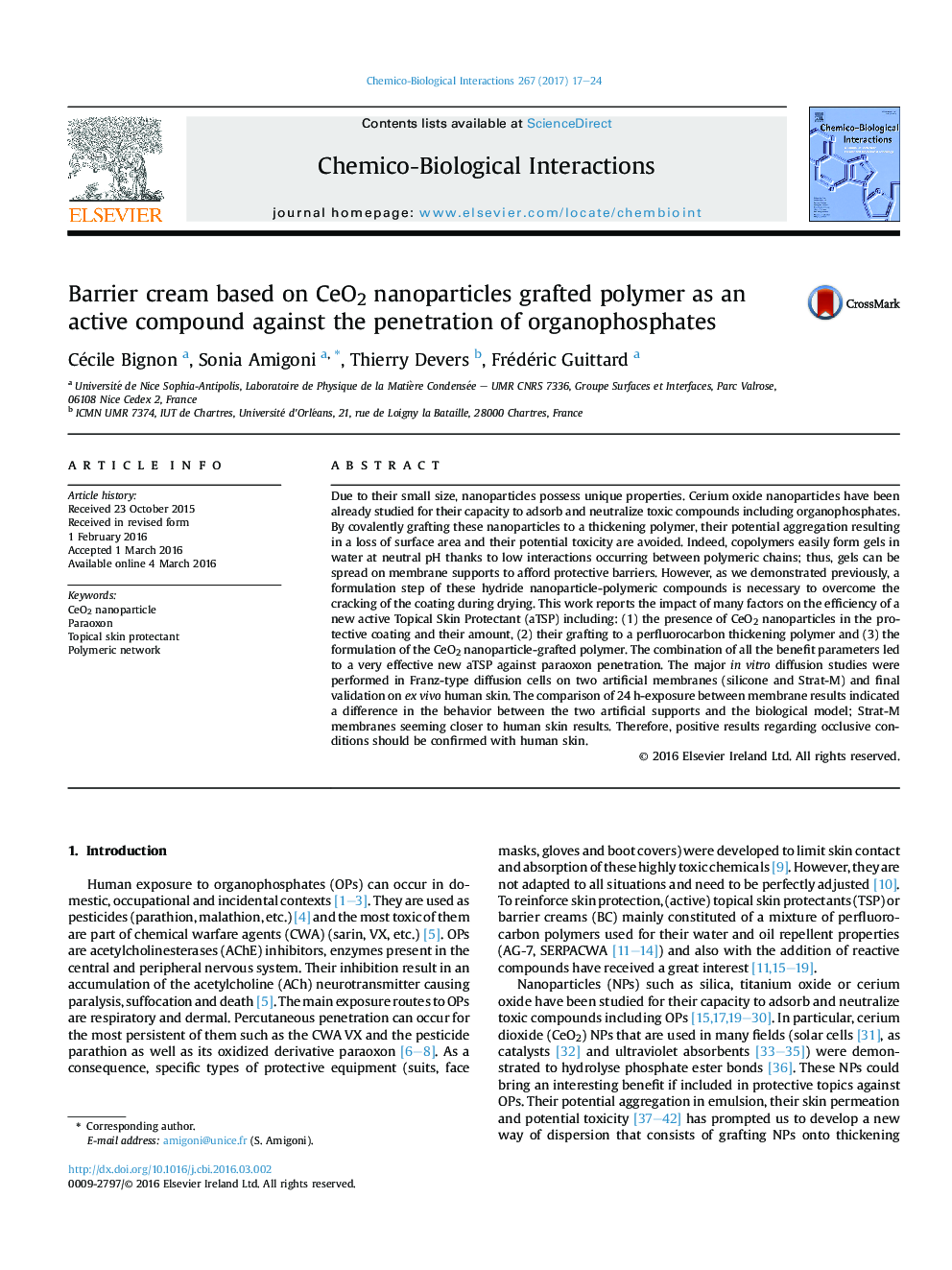| کد مقاله | کد نشریه | سال انتشار | مقاله انگلیسی | نسخه تمام متن |
|---|---|---|---|---|
| 5559364 | 1561575 | 2017 | 8 صفحه PDF | دانلود رایگان |

- Protection efficiency depends on the presence and the dose of CeO2 nanoparticles.
- Grafting of CeO2 nanoparticles to a perfluorocarbon thickener increases efficiency.
- Formulate the polymeric network of CeO2 nanoparticles increases highly the efficiency.
- Artificial membranes are models overestimating the efficiency of the new topic.
Due to their small size, nanoparticles possess unique properties. Cerium oxide nanoparticles have been already studied for their capacity to adsorb and neutralize toxic compounds including organophosphates. By covalently grafting these nanoparticles to a thickening polymer, their potential aggregation resulting in a loss of surface area and their potential toxicity are avoided. Indeed, copolymers easily form gels in water at neutral pH thanks to low interactions occurring between polymeric chains; thus, gels can be spread on membrane supports to afford protective barriers. However, as we demonstrated previously, a formulation step of these hydride nanoparticle-polymeric compounds is necessary to overcome the cracking of the coating during drying. This work reports the impact of many factors on the efficiency of a new active Topical Skin Protectant (aTSP) including: (1) the presence of CeO2 nanoparticles in the protective coating and their amount, (2) their grafting to a perfluorocarbon thickening polymer and (3) the formulation of the CeO2 nanoparticle-grafted polymer. The combination of all the benefit parameters led to a very effective new aTSP against paraoxon penetration. The major in vitro diffusion studies were performed in Franz-type diffusion cells on two artificial membranes (silicone and Strat-M) and final validation on ex vivo human skin. The comparison of 24 h-exposure between membrane results indicated a difference in the behavior between the two artificial supports and the biological model; Strat-M membranes seeming closer to human skin results. Therefore, positive results regarding occlusive conditions should be confirmed with human skin.
Journal: Chemico-Biological Interactions - Volume 267, 1 April 2017, Pages 17-24